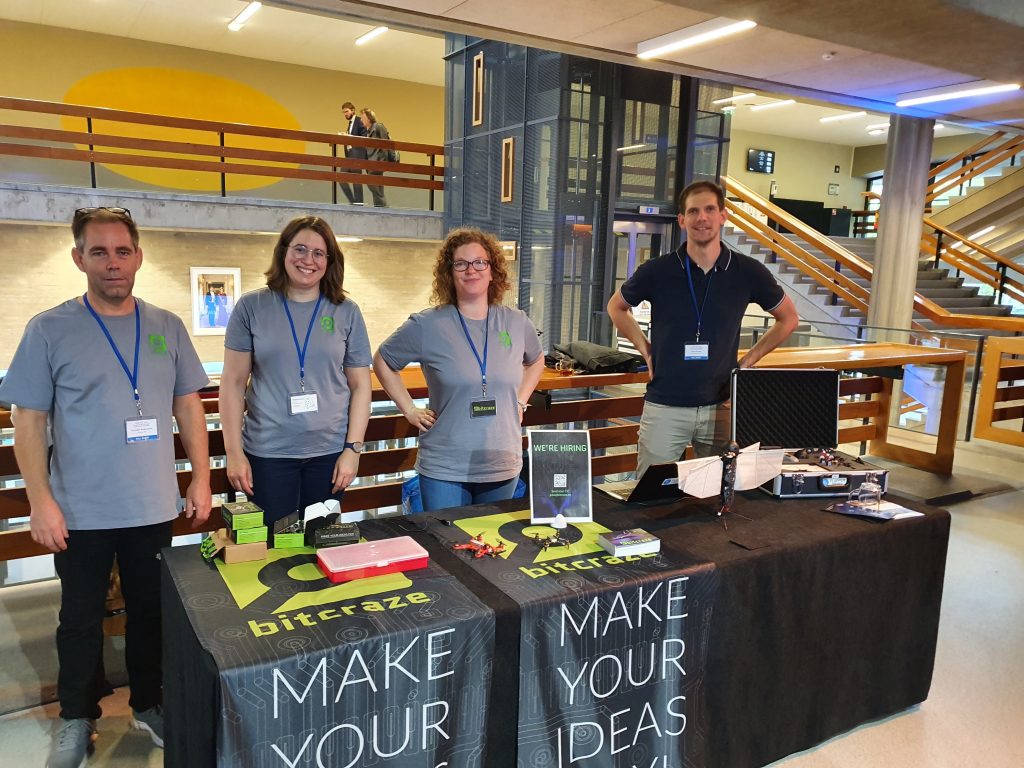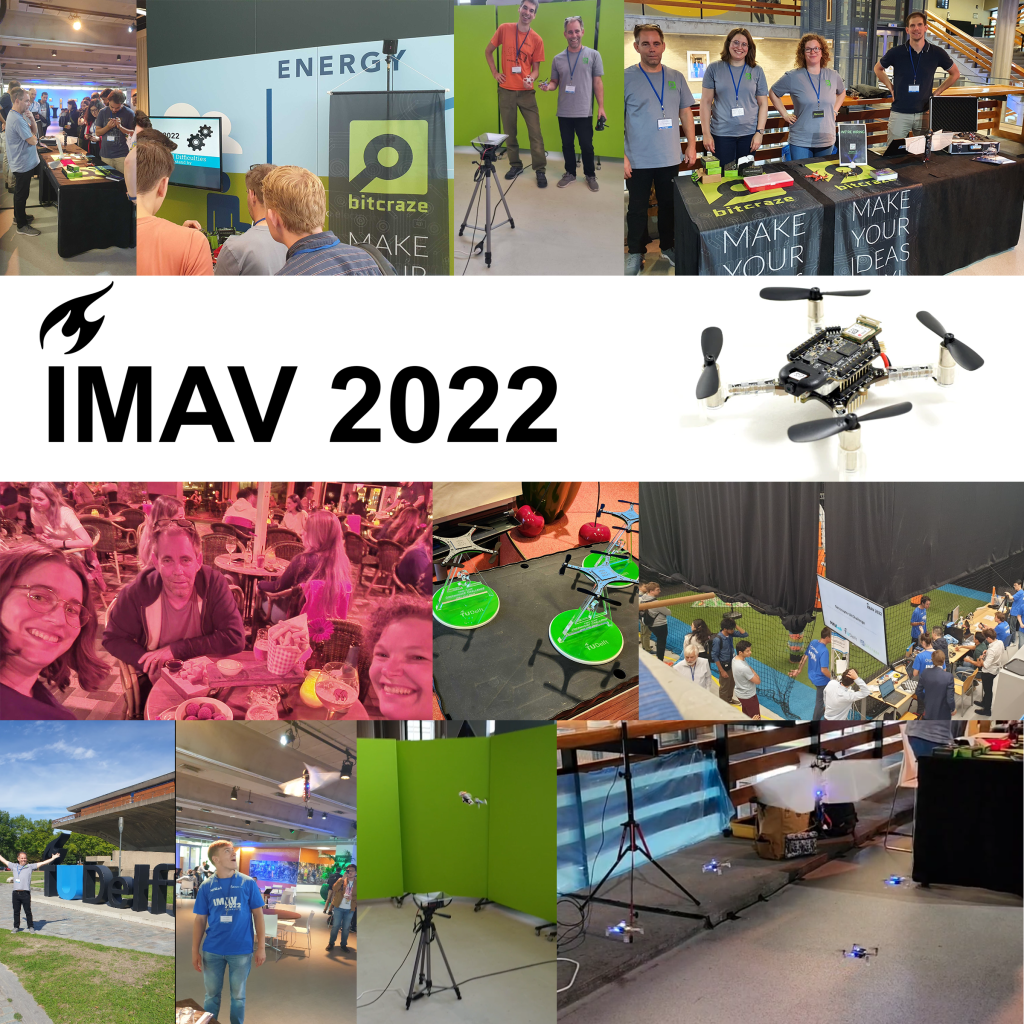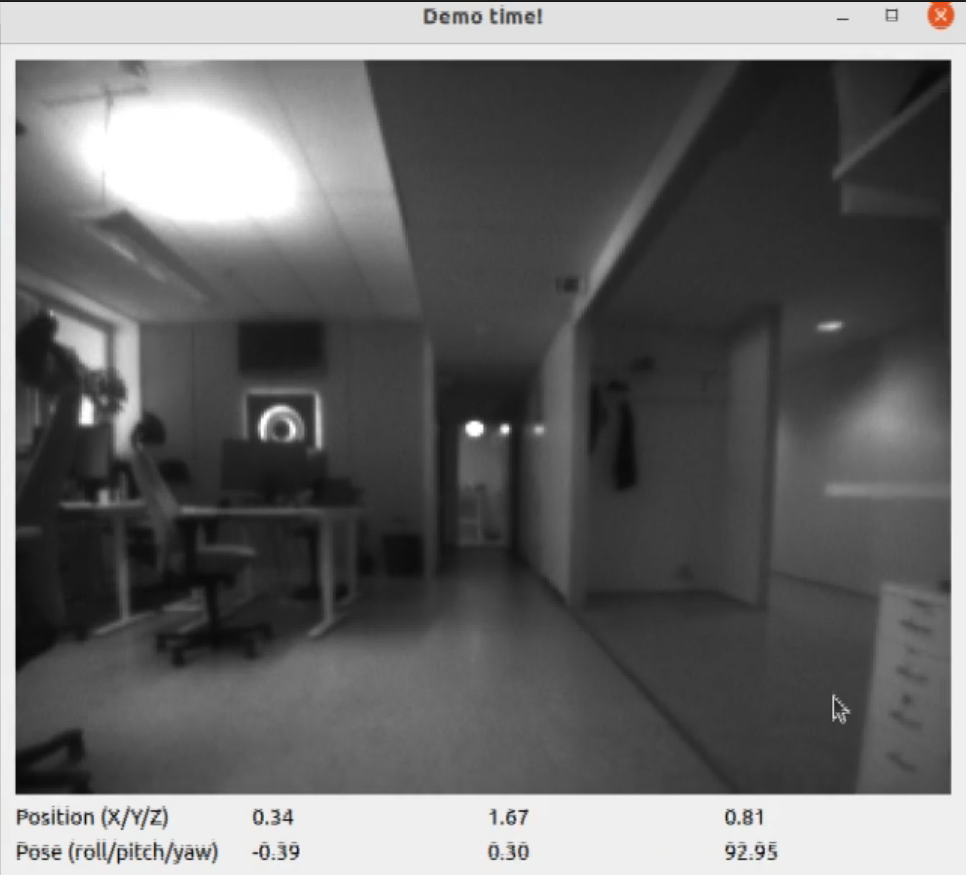Last week we went on a nice trip to Delft, The Netherlands to attend the 22th International Mico Aerial Vehicle Conference and Competition, this time organized by the MAVlab of the TU Delft. Me (Kim), Barbara and Kristoffer went there by train for our CO2 policy, although the Dutch train strikes did made it a bit difficult for us! Luckily we made it all in one piece and we had a great time, so we will tell you about our experiences… with a lot of videos!
First Conference day

For the conference days we were placed in the main aula building, so that everybody could drop by during the coffee breaks, right next to one of our collaborators, Matěj Karásek from Flapper Drones (also see this blog post)! In the big lecture hall paper talks were going on, along with interesting keynote speeches by Yiannis Aloimonos from University of Maryland and Antonio Franchi from TU Twente.
In between the talks and coffee breaks, we took the opportunity to hack around with tiny demos, for which the IMAV competition is a quite a good opportunity. Here you see a video of 4 Crazyflies flying around a Flapperdrone, all platforms are using the lighthouse positioning system.
The Nanoquadcopter challenge
The evening of the first day the first competition was planned, namely the nanoquadcopter challenge! In this challenge the goal was to autonomously fly a Crazyflie with an AIdeck and Flowdeck as far as possible through an obstacle field. 8 teams participated, and although most did offboard processing of the AIdeck’s camera streaming, the PULP team (first place) and Equipe Skyrats (3rd place) did all the processing onboard. The most exciting run was by brave CVAR-UPM team that managed to do pass through 4 gates while avoiding obstacles, for which they won a Special Achievement Award.
During the challenge, Barbara also gave a presentation about the Crazyflie while Kristoffer build up the lighthouse positioning system in the background in a record breaking 5 minutes to show a little demo. After the challenge, there were bites and drinks where we can talk with all the teams participating.
Here there is an overview video of the competition. Also there was an excellent stream during the event if you would like to see all the runs in detail + presentations by the teams, you’ll have have a full 3 yours of content, complemented by exciting commentary of Christophe de Wagter and Guido de Croon from the MAVlab. Thanks to all the teams for participating and giving such a nice show :)
The Green House Challenge
On Wednesday, we were brought to Tomato world, which is a special green house for technology development in horticulture. Here is where the Greenhouse challenge, which was the 2nd indoor drone competition took place. The teams had to participate with their drone of choice to navigate through rows of tomato plants and find the sick variant. Unfortunately we could not be up close and personal as with the nanoquadcopter challenge, but yet again there was a great streaming service available so we were able to follow every step of the way, along with some great presentations by Flapper drones and PATS! drones among others. For the later we were actual challenged to an autonomous drone fight! Their PATS-x system is made and detect pest insects that are harmful for green house crops, so they wanted to see if they can catch a Crazyflie. You can see in the video here that they manage to do that, and although the Crazyflie lived, we are pretty sure that a real fly or moth wouldn’t. Luckily it was a friendly match so we all had fun!
Here is an overview of the Green house challenge. At the end you can also see a special demo by the PULP team successfully trying out their obstacle avoiding Crazyflie in between the tomato plants. Very impressive!
Last days and final notes
Due to the planned (but later cancelled) train strikes in the Netherlands, the full pack were not able to attend the full event unfortunately. In the end Barbara and I were able to experience the outdoor challenge, where much bigger drones had to carry packages into a large field outdoors. I myself was able to catch the first part of the last conference day, which included a keynote of Richard Bomprey (Royal Veterinary College), whose lab contributed to the mosquito-inspired Crazyflie flight paper published in Science 2 years ago.
We were happy to be at the IMAV this year, which marks as our first conference attendance as Bitcraze after the pandemic. It was quite amazing to see the teams trying to overcome the challenges of these competition, especially with the nanoquadcopter challenge. We would like to thank again Guido de Croon and Christophe de Wagter of the MAVlab for inviting us!
IMAV website: https://2022.imavs.org/
Crazyflie IMAV papers:
- ‘Handling Pitch Variations for Visual Perception in MAVs: Synthetic Augmentation and State Fusion’ Cereda et al. (2022) [pdf]
- ‘Seeing with sound; surface detection and avoidance by sensing self-generated noise‘, Wilshin et al. (2022)

